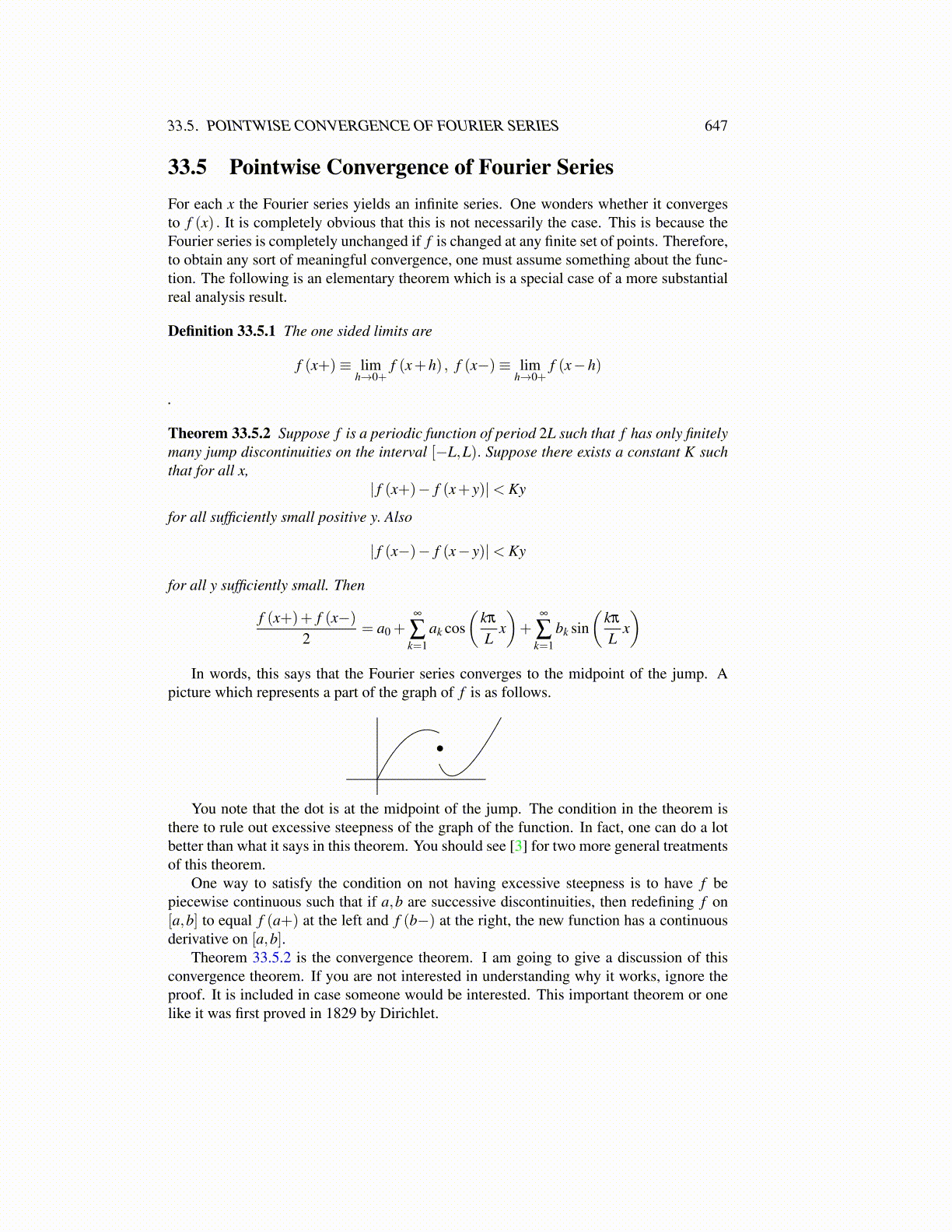
33.5. POINTWISE CONVERGENCE OF FOURIER SERIES 647
33.5 Pointwise Convergence of Fourier SeriesFor each x the Fourier series yields an infinite series. One wonders whether it convergesto f (x) . It is completely obvious that this is not necessarily the case. This is because theFourier series is completely unchanged if f is changed at any finite set of points. Therefore,to obtain any sort of meaningful convergence, one must assume something about the func-tion. The following is an elementary theorem which is a special case of a more substantialreal analysis result.
Definition 33.5.1 The one sided limits are
f (x+)≡ limh→0+
f (x+h) , f (x−)≡ limh→0+
f (x−h)
.
Theorem 33.5.2 Suppose f is a periodic function of period 2L such that f has only finitelymany jump discontinuities on the interval [−L,L). Suppose there exists a constant K suchthat for all x,
| f (x+)− f (x+ y)|< Ky
for all sufficiently small positive y. Also
| f (x−)− f (x− y)|< Ky
for all y sufficiently small. Then
f (x+)+ f (x−)2
= a0 +∞
∑k=1
ak cos(
kπ
Lx)+
∞
∑k=1
bk sin(
kπ
Lx)
In words, this says that the Fourier series converges to the midpoint of the jump. Apicture which represents a part of the graph of f is as follows.
•
You note that the dot is at the midpoint of the jump. The condition in the theorem isthere to rule out excessive steepness of the graph of the function. In fact, one can do a lotbetter than what it says in this theorem. You should see [3] for two more general treatmentsof this theorem.
One way to satisfy the condition on not having excessive steepness is to have f bepiecewise continuous such that if a,b are successive discontinuities, then redefining f on[a,b] to equal f (a+) at the left and f (b−) at the right, the new function has a continuousderivative on [a,b].
Theorem 33.5.2 is the convergence theorem. I am going to give a discussion of thisconvergence theorem. If you are not interested in understanding why it works, ignore theproof. It is included in case someone would be interested. This important theorem or onelike it was first proved in 1829 by Dirichlet.